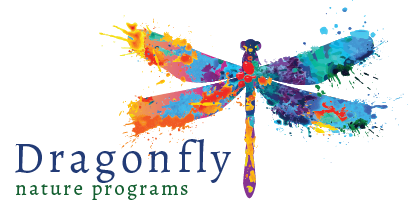I write to remind you, that we are more closely dependent on our Planet Earth than we are typically, consciously, willing to acknowledge. Wake up to this, for your own wellbeing, and so that you can help me teach our children that only a healthy Earth can supply our survival needs and our Earth is only as healthy as we humans, allow it to be.
A Nature Lover's Bookshelf for Kids I
Books are a terrific way to reinforce the nature education you are providing in your classroom or as a gateway into the world of nature. Books can introduce new concepts while reading to the whole group or allows a curious child time to visit with a book on their own; either way, having a bookshelf stocked with stories and illustrations about our natural world is essential to any nature based classroom.
Teaching Climate Change: a personal reflection
My first misstep in teaching climate change is thinking it’s too controversial, too sad or too much for students to learn. There is a small piece of this puzzle that every student at any age can learn, and by introducing the topic scientifically and at the appropriate developmental level, it’s a lesson worth teaching and learning.
Strategies for Connecting with Nature in the Virtual Classroom
Teachers, I wanted to find ways to support your virtual work and so I’ve compiled some wonderful tools to help you connect children with nature during this unusual year. I have a little something for everyone this month, from pre-K to AP high school classrooms. The resources shared are all designed to support outdoor education and each has its pros and cons which I’ve listed to help you make the best choice for your classroom.
Bugwalks
The pandemic has schools closed and is forcing everyone to adapt. Now is a good time to remind parents and teachers alike that some of our children’s best math lessons are born from time spent with a child, practicing a favorite family recipe. Some of the best lessons on patterns is learning to crochet or knit. Literacy skills are developed and refined during bedtime stories and introductions to our natural environment are done while on family walks.
Not every lesson has to precisely meet every state learning standard for it to be memorable and effective. For all the parents and teachers out there, racking your brains for quality at-home learning experiences, I’d like to suggest, a walk.
Nature Journaling and A Snail
While I, and most of you cannot teach right now, we can hone our skills that improve our teaching. We can make time for our physical and emotional selves to cope and rest, reflect and learn. Nature journaling and “The Sound of a Wild Snail Eating” may be a great growth opportunity for you. When schools resume classes, I will fully recommit myself to my students, even more ardently than before this viral jolt to my world. The manifestation of that is dependent on how I spend my time during this pause.
Make Time for Trees
Citizen Science: The Great Backyard Bird Count
Since 1998, the Cornell Lab of Ornithology and the National Audubon Society has been recruiting citizen scientists worldwide to collect bird data and report it back online. Every February for 4 days, more than 160,000 volunteers spot local birds, reporting it onto a simple webpage where scientists collect the data needed to study changing bird populations due to natural fluctuations, human encroachment and climate change. This is a project that can get students much appreciated time outdoors connecting them simultaneously to their local environment and the larger world.













